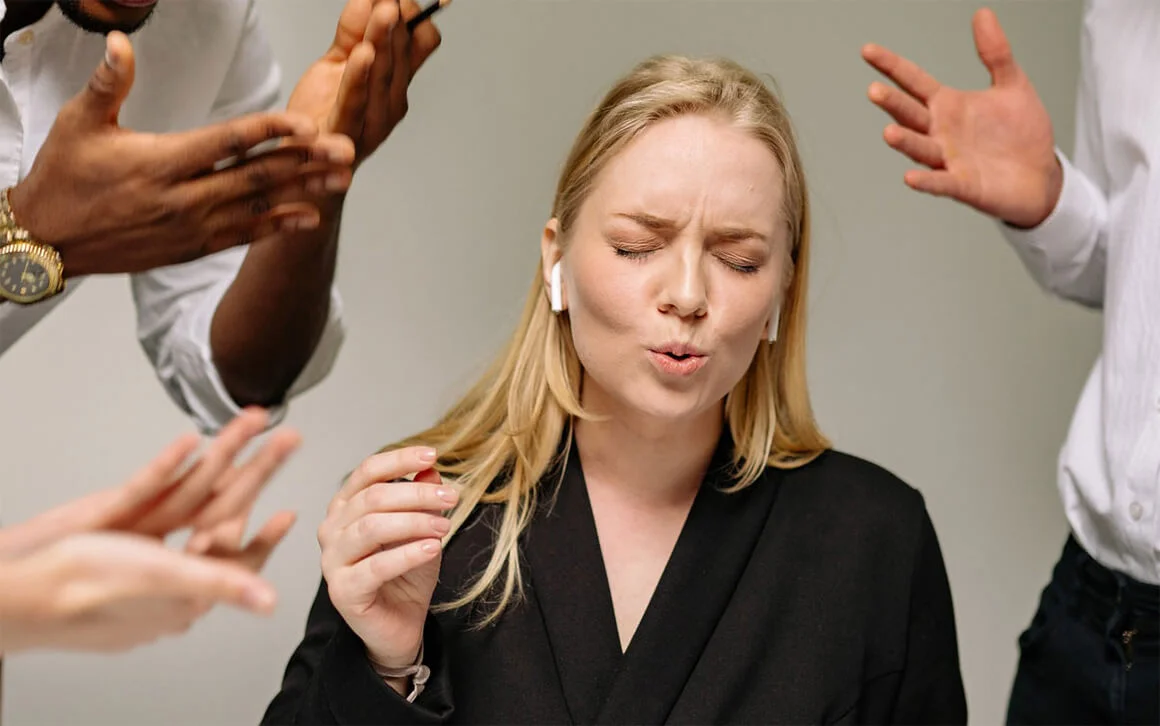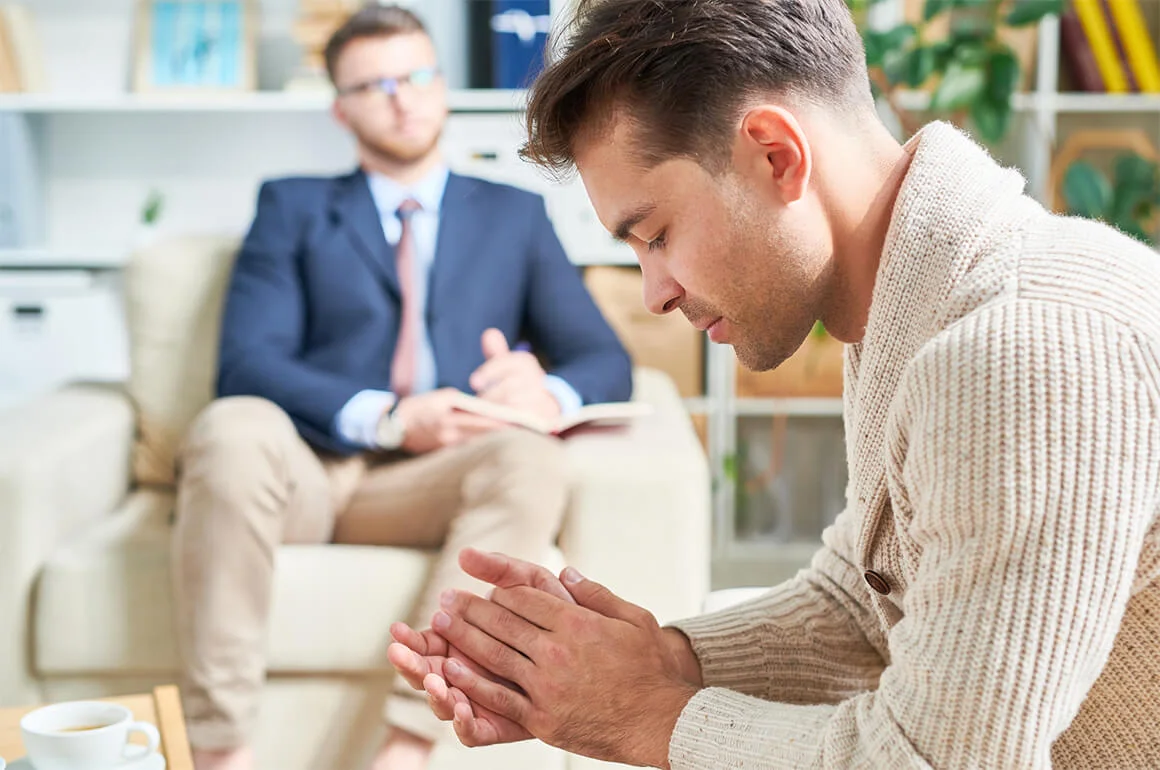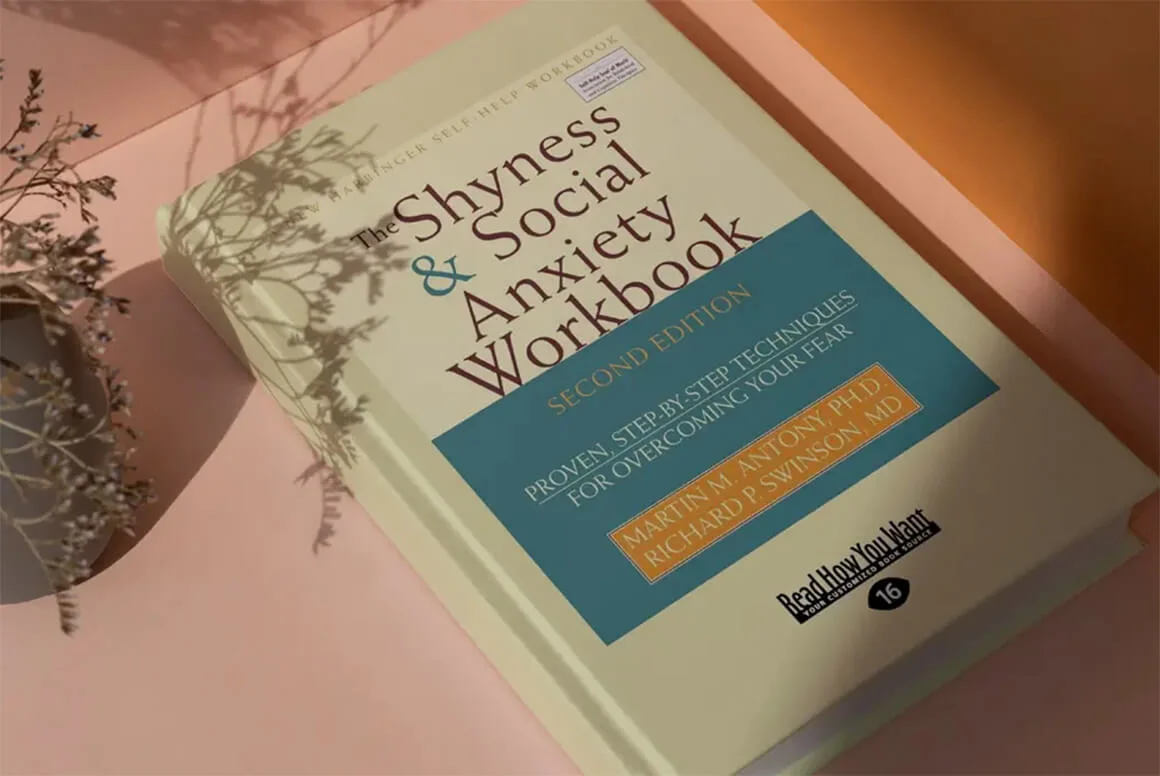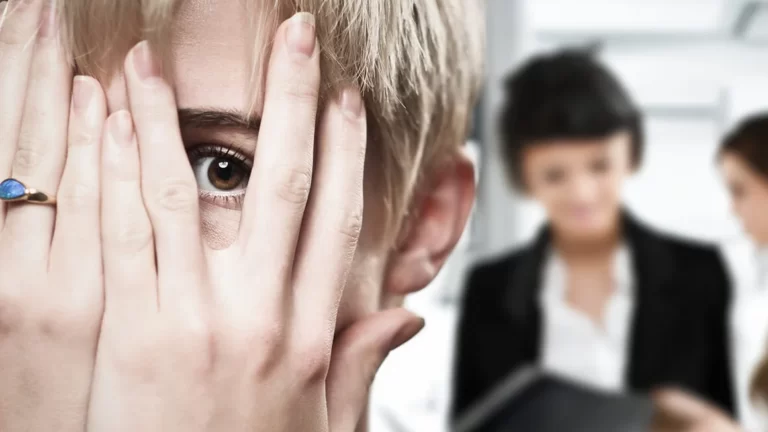Social phobia, also known as social anxiety disorder, is a chronic psychological condition where individuals experience disproportionately strong fear or anxiety in social situations or interactions with others.
These situations may include communication in small groups, dining in public places, speaking in front of an audience, or even simple one-on-one conversations. People suffering from social phobia often fear behaving foolishly, which they believe could lead to negative evaluation or judgment.
This condition significantly limits activity and deteriorates quality of life. Therefore, understanding how to overcome social phobia is crucial for many extremely shy adults and adolescents.
It’s important to recognize that fear or anxiety in new or stressful social situations is a normal human reaction, and social phobia is diagnosed only when these feelings become excessive and interfere with normal functioning.
Social phobia is one of the most common mental disorders, affecting up to 12% of adults at some point in their lives, according to experts. However, the prevalence of this condition can vary depending on cultural and social contexts.
Social phobia can profoundly impact a person’s quality of life. It often leads to communication difficulties, social isolation, impaired social relationships, and decreased academic and professional productivity.
Additionally, social phobia is often associated with other mental health issues, including other anxiety disorders, depression, and substance abuse, which individuals may use in an attempt to cope with anxiety and depression.

Causes of social phobia development
Causes of social phobia development are diverse and include both biological and environmental factors. Biological factors may involve genetic predisposition and brain function, particularly in the area of anxiety and fear regulation.
Among external factors contributing to the development of social phobia, family factors and upbringing play a significant role, including parental communication style and their attitudes toward the child, as well as societal and cultural norms. Additionally, stressful events such as traumatic social situations can also be influential.
Genetic Factors
Genetic factors play a crucial role in the development of social phobia. Research indicates that individuals with close relatives who suffer from social phobia or other anxiety disorders are at a higher risk. This suggests a potential genetic component.
However, genetics more likely contribute to a general predisposition to anxiety disorders rather than specifically to social phobia. Like most mental disorders, social phobia results from the interplay of multiple genes and environmental factors.
Environmental Factors
Family environment influences the development of social phobia in children. Parents who experience social anxiety themselves or overestimate the risks of social situations may transmit these beliefs to their children.
Psychological trauma or negative experiences in social situations can also contribute to the development of social phobia. This includes bullying, humiliation, peer rejection, or unsuccessful public performances.
Cultural factors can also influence the development of social phobia. In some cultures, shame or “loss of face” holds particular significance, intensifying fears of public embarrassment.
Personality Factors
Personality factors can also influence the likelihood of developing social phobia, including temperament, character traits, and cognitive processes.
- Temperament: Shy or anxiety-prone children are often more susceptible to developing social phobia later in life.
- Personality traits: Certain traits such as low self-esteem, perfectionism, and self-criticism can increase the likelihood of developing social phobia.
- Cognitive processes: Individuals with social phobia often engage in negative thinking, including biased perceptions of social situations, overestimation of risks, and underestimation of their ability to cope with social anxiety.
Together with environmental and genetic factors, these aspects contribute to the development of social phobia. However, it’s important to note that none of these factors alone lead to the development of a mental disorder. Typically, it results from the interaction of multiple components.

Signs of social phobia
Signs of social phobia can be diverse, encompassing both physical manifestations (such as increased heart rate, sweating, tremors) and emotional or cognitive reactions (e.g., anxious thoughts, fear of humiliation, avoidance of social situations). These symptoms significantly impair daily functioning, work, education, or social relationships.
Physical Manifestations
Physical symptoms of social phobia can vary widely and are largely associated with the activation of the body’s “fight or flight” response to perceived threat.
- Cardiovascular symptoms: Rapid heartbeat, pounding in veins, chest pains, flushing of the face or other parts of the body.
- Respiratory symptoms: Difficulty breathing or feeling of being suffocated.
- Gastrointestinal symptoms: Nausea, stomach pains, or diarrhea due to severe anxiety.
- Other symptoms: Increased sweating, body tremors or shaking, dry mouth, dizziness, or weakness.
All these physical symptoms can exacerbate the fear and anxiety triggered by social situations, creating a cycle that is difficult to break without psychological intervention.
Emotional Manifestations
The emotional manifestations of social phobia can be as intense as the physical symptoms.
- Intense fear of specific social interactions is a key symptom of social phobia. This may involve fear of appearing foolish, humiliated, awkward, or being criticized.
- Excessive or inappropriate anxiety in social situations, especially anticipating upcoming events such as public speaking or meetings.
- Feeling of discomfort. People with social phobia may constantly feel uneasy in public places, especially when interacting with new people or being in the spotlight.
- Avoidance. This emotional state often leads to actively avoiding social interactions, thereby reducing quality of life and limiting opportunities for personal growth.
It’s important to note that emotional manifestations of social phobia can vary in intensity from person to person and may fluctuate over time.
Behavioral Manifestations
Behavioral manifestations of social phobia primarily involve avoidance and concealing one’s feelings.
- Avoidance of social situations is one of the most obvious behavioral symptoms of social phobia. This can manifest as refusing to participate in public events, avoiding crowded places, or refraining from group interactions.
- Escape. Individuals with social phobia may abruptly leave social situations that provoke anxiety, even at inconvenient moments.
- Withdrawal. In an attempt to hide their anxiety, individuals with social phobia become very withdrawn and uncommunicative in the presence of others.
- Limited communication. They prefer to communicate only with close friends or family members and avoid making new acquaintances.
- Speaking briefly or monosyllabically. To minimize the risk of making a mistake or appearing foolish, individuals with social phobia may give minimal responses in conversation.
- Postponement or cancellation of meetings. Meetings and other events are frequently postponed, rescheduled, or canceled due to fear of social interaction.
All these behavioral symptoms can lead to serious consequences such as deterioration of social relationships, work or school problems, and overall reduced quality of life.

Diagnosis of social phobia
Diagnosis of social phobia typically begins with a thorough examination and discussion with a psychologist or psychiatrist about the history of symptoms, their impact on daily life, and any events or circumstances that may exacerbate or improve them.
Various diagnostic tools and criteria may be used to refine the diagnosis. For instance, the Diagnostic and Statistical Manual of Mental Disorders (DSM-5) provides specific criteria for social phobia, including fear or anxiety in social situations, concern about being negatively evaluated, and avoidance of social interactions.
Seeking Help from a Specialist
If you experience symptoms of social phobia that interfere with your daily life, it is important to seek help from a psychologist, psychiatrist, or other mental health professional.
During your initial visit, the specialist will typically conduct a detailed interview to understand your history, current symptoms, and their impact on functioning. They may inquire about general health, family history, and use of alcohol or drugs, as these factors can influence your symptoms.
Based on this assessment and additional evaluations, the psychologist will propose a treatment plan for overcoming social phobia, which may include psychotherapy, medication, or a combination of both. Seeking help from a specialist is the first and most crucial step toward returning to a fulfilling life.
Diagnostic Criteria
For the diagnosis of social phobia (also known as social anxiety disorder), criteria outlined in the Diagnostic and Statistical Manual of Mental Disorders, 5th Edition (DSM-5) are typically utilized:
- Marked fear or anxiety about one or more social situations in which the individual is exposed to possible scrutiny by others.
- Fear that they will act in a way or show anxiety symptoms that will be negatively evaluated (e.g., will be seen as weak, stupid, boring, or anxious).
- Social situations almost always provoke fear or anxiety.
- Social situations are avoided or endured with intense fear or anxiety.
- The fear or anxiety is out of proportion to the actual threat posed by the social situation and to the sociocultural context.
- The fear, anxiety, or avoidance is persistent, typically lasting for 6 months or more.
- Causes clinically significant distress or impairment in social, occupational, or other important areas of functioning.
- The disturbance is not better explained by the symptoms of another mental disorder, such as panic disorder, body dysmorphic disorder, or autism spectrum disorder.

How to Overcome Social Phobia: Action Plan
A step-by-step plan to overcome social phobia typically includes a combination of psychotherapy (such as cognitive-behavioral therapy), self-help anxiety coping strategies, and, in some cases, medication.
The goal is to teach individuals how to manage their symptoms, including identifying anxious thoughts, developing communication skills, reducing stress, and gradually overcoming the fear of social interaction through exposure.
However, it’s important to understand that overcoming social phobia is not a quick process. It’s gradual and requires time and patience. The plan should be tailored to each individual’s needs and conducted under the guidance of a qualified mental health professional.
Progress may be slow, but over time, individuals may feel more capable of managing their anxiety and participating more actively in social life.
Step 1. Acknowledging the Problem
Acknowledging the problem is the first step in overcoming social phobia. This requires openness and honesty towards oneself and one’s emotions. You’ll need to accept that your anxiety symptoms exceed normal levels of fear or nervousness in social situations, and that they interfere with daily life.
If you find yourself avoiding social interactions, often worrying about what others think of you, or experiencing intense anxiety before certain social events (such as meetings, performances, or interacting with strangers), these may be signs of social phobia.
Step 2. Finding a Psychologist or Therapist
After acknowledging the problem, the next step is to find a specialist who can help you. Psychologists, psychiatrists, and therapists have the skills and experience necessary to diagnose social phobia and develop an individualized treatment plan.
Initially, the specialist will conduct a detailed interview and diagnostic assessment to evaluate your symptoms, understand how they affect your life, and determine whether you have social phobia or other anxiety disorders.
Step 3. Developing an Individualized Treatment Plan
Developing an individualized treatment plan is a key step towards overcoming social phobia. Based on your diagnostic assessment, the psychologist will propose a plan that may include various strategies and approaches.
One of the most effective approaches to treating social phobia is cognitive-behavioral therapy (CBT), which helps identify and change negative thinking patterns that contribute to anxiety. CBT may also include communication skills training, relaxation techniques, and exposure therapy—gradual and controlled exposure to situations that cause anxiety.
In some cases, medication may be recommended. There are different types of medications that are effective in managing symptoms of social phobia, including antidepressants, benzodiazepines, and beta-blockers. It’s important to discuss potential side effects and risks with your therapist.
Your treatment plan may also include self-help and anxiety coping strategies, such as regular exercise for stress reduction, practicing meditation or yoga, improving communication skills, and setting healthy boundaries in relationships.
Step 4. Psychotherapy (Cognitive-Behavioral Therapy, Exposure Therapy)
Psychotherapy, especially cognitive-behavioral therapy (CBT) and exposure therapy, are often core elements of the treatment plan for social phobia.
- Cognitive-behavioral therapy (CBT) aims to change negative thoughts and behavioral reactions that contribute to social phobia. During CBT, you’ll learn to identify and change unproductive or destructive thinking patterns that cause anxiety or fear in social situations. CBT also includes communication and assertiveness skills to help you feel more comfortable and confident in social interactions.
- Exposure therapy is a specific form of CBT focused on gradual and controlled exposure to situations or stimuli that provoke anxiety. The goal of exposure therapy is to help overcome fear or avoidance of these situations, gradually getting used to them in a safe and supportive environment. Over time, this can help reduce anxiety and improve your ability to engage in social interactions.
It’s important to note that the effectiveness of psychotherapy can vary from person to person, and your active participation and effort in therapy are key factors in success.
Step 5. Pharmacotherapy (If Needed)
Pharmacotherapy can be a useful component of the treatment plan for social phobia, especially if symptoms are severe or psychotherapy alone doesn’t achieve the desired effect. It’s important to remember that the decision to use medications should be made in consultation with a medical professional, taking into account your individual needs, possible risks, and side effects.
- Selective serotonin reuptake inhibitors (SSRIs) and serotonin-norepinephrine reuptake inhibitors (SNRIs) are antidepressants that help reduce anxiety symptoms. They are usually taken daily for several weeks to achieve full effect.
- Benzodiazepines are sedative medications that help reduce anxiety. However, they can lead to quick tolerance, so they are not recommended for long-term use.
- Beta-blockers are medications used to control blood pressure, but they also help manage physical symptoms of anxiety such as tachycardia or tremors.
Other types of medications may be recommended depending on your individual needs. Always discuss potential side effects and interactions with other medications with your doctor.
Step 6. Self-Help and Anxiety Coping Strategies
In addition to professional treatment, there are other approaches you can use independently to overcome social phobia. Here are some of them:
- Stress reduction exercises: Regular physical exercise helps reduce overall anxiety levels. This can include aerobic exercises such as running, swimming, or cycling, as well as relaxing exercises such as yoga or Pilates.
- Relaxation techniques such as deep breathing, progressive muscle relaxation, or meditation help reduce physical symptoms of anxiety and improve overall health.
- Proper nutrition and quality sleep also play an important role in managing anxiety. They help maintain physical fitness and energy balance, which contributes to reducing anxiety.
- Social support from friends and family is an important element in coping with social phobia. They can provide a safe space to discuss your fears and feelings with understanding.
- Communication skills practice helps you feel more confident in social situations. This can include practicing direct eye contact, effective listening, and expressing your thoughts and emotions.
- Positive thinking practices allow you to shift focus from negative thoughts to positive ones. This includes writing positive affirmations or keeping a gratitude journal.
Remember, these self-help strategies are useful supplements to professional treatment; they cannot replace consultations with a psychologist.
Step 7. Support from Close People
Support from close people is a crucial component in overcoming social phobia. It can take various forms:
- Understanding and empathy: Loved ones who understand the true nature of social phobia can help alleviate feelings of shame or guilt that often accompany this condition. Empathy and understanding help reduce additional stress and anxiety.
- Assistance during panic attacks or episodes of anxiety: Having someone nearby who knows how to provide support during a panic attack can be a huge relief. This includes helping with relaxation techniques, ensuring safety, or simply providing support during difficult times.
- Encouragement for treatment: Loved ones often play a key role in encouraging you to seek help. They can be your allies, helping you adhere to your treatment plan.
- Participation in joint social activities: Loved ones can help you gradually get used to social interaction by participating in safe and controlled social activities with you.
However, it’s important to remember that loved ones may also need psychological support, as helping a loved one overcome social phobia can be a challenging and emotionally stressful task.

Strategies for Overcoming Social Phobia
Strategies for overcoming social phobia involve a range of approaches aimed at alleviating anxious symptoms. These strategies focus on changing negative thought patterns, improving social skills, and managing stress.
A crucial part of these strategies is working with a psychologist who develops an individualized plan to combat social phobia, including psychotherapy and various self-help techniques for anxiety relief.
Relaxation Techniques and Meditation
Relaxation techniques and meditation can be highly effective in combating social phobia and anxiety. Here are some of them:
- Deep breathing helps reduce tension and improve focus and stress resilience. This technique involves slow, deep inhalation through the nose, holding the breath for a few seconds, and slow exhalation through the mouth, repeated up to 10 times.
- Mindfulness meditation involves focusing on the present moment, acknowledging and accepting one’s feelings, thoughts, and sensations without judgment. This helps reduce anxiety and alleviate stress.
- Progressive muscle relaxation involves sequentially tensing and relaxing different muscle groups, thereby easing physical tension and enhancing body awareness.
- Visualization or guided imagery involves imagining soothing and relaxing images, which helps reduce anxiety and lower stress levels.
These techniques can be used anytime and anywhere during episodes of heightened anxiety. However, they require some time and practice to become truly effective.
Managing Negative Thoughts
Managing negative thoughts involves tools that help change negative or destructive thought patterns. Here are some of them:
- Cognitive restructuring involves identifying and replacing negative thoughts with more positive or realistic ones. It includes questioning your thoughts and seeking alternative interpretations of situations.
- Mindfulness practice helps accept your thoughts and feelings without trying to change or avoid them. This helps reduce stress and anxiety associated with negative thoughts.
- Positive reframing involves changing your perception of a situation by transforming negative thoughts into positive ones. For example, instead of thinking “I’ll never be able to handle this,” think “This is challenging, but I can do it.”
- Gratitude practice involves focusing on the positive aspects of your life, providing an opportunity to soften negative thoughts. For example, keeping a gratitude journal where you write down what you are thankful for each day.
- Dialectical Behavioral Therapy (DBT) combines elements of mindfulness, emotional regulation, and stress tolerance, helping people manage their emotions and overcome negative thoughts.
- Thought-stopping technique involves training yourself to “stop” negative thoughts as soon as they arise and replacing them with positive or neutral judgments.
Remember that the effectiveness of these techniques will vary depending on personality and situation, and will require practice and patience.
Social Skills Training
Social skills training is a crucial strategy for overcoming social phobia. This training involves practicing and improving interactions with other people. Here are some key aspects of this approach:
- Communication skills: Learning to effectively express thoughts and feelings, listen to others, and respond appropriately to criticism or feedback. This may also include understanding nonverbal communication, such as eye contact, facial expressions, and gestures.
- Contact establishment skills: Learning to initiate, maintain, and conclude conversations. This helps create new social connections and maintain existing ones.
- Anxiety management skills: Techniques that help manage anxiety in social situations, such as deep breathing, meditation, or using affirmations.
- Self-acceptance skills: Working on accepting oneself and one’s characteristics helps reduce anxiety and negative thoughts associated with social interactions.
- Handling rejection or criticism skills: Being able to respond appropriately to rejection or criticism is a very important social skill, helping to maintain composure and respectful relationships with others.
- Exposure therapy involves gradually and controlledly recreating a frightening social situation to learn how to overcome fear.
Social skills training is usually conducted with a psychologist during group therapy. It is especially beneficial for people who want to overcome social phobia.
Regular Exercise
Regular exercise is an invaluable tool in the process of overcoming social phobia. Physical activity helps reduce stress and anxiety levels, improves mood and overall health, and promotes better sleep. Here are several types of exercises that are particularly beneficial:
- Aerobic exercises such as running, brisk walking, cycling, swimming, and other forms of aerobic activity help reduce stress and anxiety.
- Strength exercises: Weight training or functional exercises strengthen the body and improve physical fitness, which in turn increases self-esteem and eliminates anxious thoughts.
- Stretching and yoga: These activities help relax, reduce stress levels, improve mindfulness, and sleep.
- Meditation and breathing exercises: These practices promote mental calmness and reduce anxiety.
In addition to this, remember the importance of regularity: shorter workouts performed regularly yield better results than long and exhausting workouts performed infrequently. Choose types of physical activity that you enjoy and can incorporate into your daily routine.

Recommended Literature on Social Phobia
- “Overcoming Social Anxiety and Shyness” by Gillian Butler. This book offers strategies for combating social phobia and overcoming the fear of social interactions.
- “The Shyness and Social Anxiety Workbook: Proven, Step-by-Step Techniques for Overcoming Your Fear” by Martin M. Antony and Richard P. Swinson. This practical guide provides a range of exercises and strategies for dealing with social phobia.
- “Dying of Embarrassment: Help for Social Anxiety & Phobia” by Mark P. Zolo, Teresa Flynn, and Barbara G. Markway. This book serves as a comprehensive resource for people suffering from social anxiety disorder.
- “How to Be Yourself: Quiet Your Inner Critic and Rise Above Social Anxiety” by Ellen Hendriksen. In this book, the author shares scientific strategies for overcoming social phobia.
- “Cognitive-Behavioral Group Therapy for Social Phobia: Basic Mechanisms and Clinical Strategies” by Richard G. Heimberg and Robert E. Becker. This scientific guide contains a detailed exposition of cognitive-behavioral group therapy for overcoming social phobia.
- “The Mindfulness and Acceptance Workbook for Social Anxiety and Shyness: Using Acceptance and Commitment Therapy to Free Yourself from Fear and Reclaim Your Life” by Jan E. Fleming and Nancy L. Kocovski. The book presents strategies based on acceptance and commitment therapy, which help in dealing with social phobia.
Please note that these books do not replace professional medical assistance and psychological consultations, but they can serve as useful resources for obtaining additional information and support.










